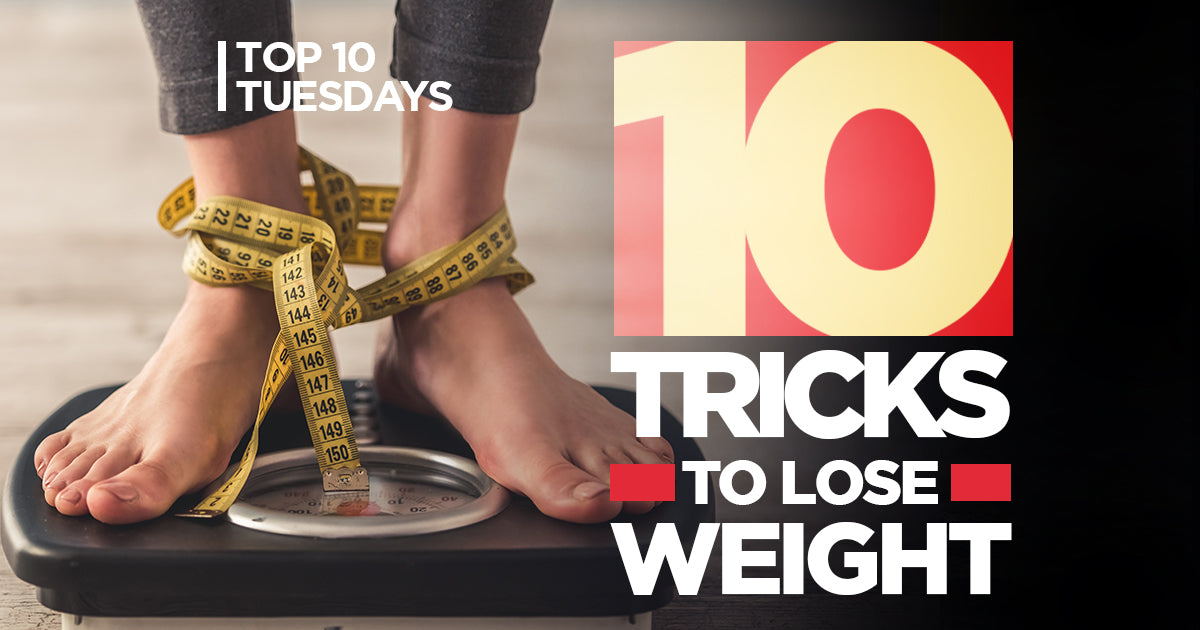10 easy tricks to help you lose weight. Use one or more of these tricks to take a step in the right direction! As with anything your weight loss is a consistent journey and making these changes to your lifestyle will have great benefits.
1. Use a step tracker
On average, sedentary people take only 2,000 to 3,000 steps a day. Adding 2,000 steps will help you maintain your current weight and stop gaining weight; adding more than that is one of the ways to lose weight and help keep your body in a caloric deficit.
2. Add Fiber to your diet
Fiber has no magical fat-burning properties. It simply helps you feel full without adding a lot of extra calories to your diet. High fiber foods include fruits, vegetables, and healthy fats such as nuts and avocados.
3. Consume most of your calories before noon
Studies have found that the more you eat in the morning, the less you’ll eat in the evening. And you have more opportunities to burn off those early day calories than you do to burn off calories that you consume in the afternoon.
4. Eat unprocessed foods and avoid processed foods.
Processed foods take away valuable nutrients from your diet and adds fillers that aren’t as nutritionally beneficial such as fat, sugar and unnatural preservatives. A good tip is to try and stick to foods that are unprocessed or minimally processed.
5. Be in a Caloric deficit
Being in a caloric deficit is essential to any kind of weight loss; without a deficit, you will not lose weight. It’s as simple as that. 1 pound of fat contains about 3500 calories. So, if you created a 500 calorie deficit each day, you'd create a total deficit of 3500 calories per week and should therefore lose about 1lb of fat per week.
6. Carb timing
Choosing when to eat your carbohydrates can have a huge impact on weight loss. The most recommended consumption time for carbohydrates is post workout. After exercise, controlling carb intake and consuming plenty of protein rich foods will help enrich your muscular recovery and boost your metabolism! Foods that are carb-dense are best consumed during and after exercise, for up to about 3 hours. And remember, carbohydrates have a protein sparing effect, so we require less dietary protein when carb intake is higher.
7. Drink Water before Meals
Drinking water before your meal has been shown to decrease body weight. Water acts as an appetite subpressant, so drinking before meals can make you feel fuller, therefore reducing the amount of food you eat.
8. Choose Healthy Fats
The right kinds of fats help increase satiety, maximize your metabolism, protect against heart disease, speed nutrients through your body, and improve your fat-soluble vitamin uptake. Sources of healthy fats include: almonds, avocados, natural peanut butter, and olive oil.
9. Choose Your Macros Wisely
For weight loss the best macronutrient ratio should include low carbohydrates, high protein, and moderate fats. A big mistake that most people make is lowering fats and carbohydrates at the same time. If an individual chooses to lower his or her carbohydrate intake, then the main source of energy has to come from healthy fat sources mentioned prior. An ideal macronutrient ratio that I recommend would be 40 % protein 40% fats and 20% carbohydrates. Give it a try!
10. Try Fasted Workouts
Fasted Workouts have recently become increasing popular amongst the fitness community. Training on an empty stomach, or in a fasted state, will effectively force your body to burn fat more affectively by increasing growth hormone release. Growth hormone helps the body make new muscle tissue, burn fat, and improve bone quality, physical function, and longevity.

Kevin Kochiss
Kevin has earned his M.S in Nutrition and B.S. in Exercise Science. He is an ISSA certified personal trainer and a NSCA certified strength and conditioning specialist.


